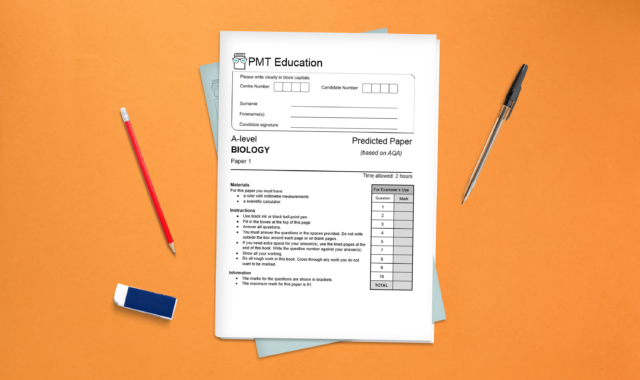Contents:
- What factors affect how much I can charge as a tutor?
- How can I find out what other tutors are charging?
- Should I start with a lower tuition rate?
- How do I know if I’ve set my rate correctly?
- How much do I need to earn to make tutoring worthwhile?
- Should I always charge the highest tuition rate I can?
- When is the best time to increase my tutoring rate?
- Should I increase my tutoring rates during busy periods?
- How do I increase my tutoring rate without losing students?
Determining your rate as a tutor isn’t always easy.
When you’re just starting out, it can be hard to know where to set your price. Even if you have tutored elsewhere before, joining a new platform without reviews or an established profile can feel like starting from scratch. And once you are established, it’s not always clear when—or how—to increase your rates.
Whether you’re setting your price for the first time or reassessing it after gaining experience, this article will walk you through what to consider so you can set your tuition rate with confidence.
What factors affect how much I can charge as a tutor?
Before settling on a number, it’s important to understand the factors that shape what tutors typically charge.
1. Qualifications
While qualifications aren’t everything, they can influence what parents are willing to pay—especially when you’re just getting started.
Tutors with Qualified Teacher Status (QTS), subject-relevant degrees, or postgraduate qualifications often stand out because these credentials demonstrate a strong understanding of the material they’re teaching. This can help justify a higher rate, particularly for advanced levels like A Level.
Even if you’re still at university, studying a degree that’s closely related to the subject you’re tutoring shows that you are well-equipped to support GCSE and A Level students.

2. Experience
Rates often reflect experience—but that doesn’t just mean classroom teaching. A fully qualified teacher with years of experience will usually be able to charge more than a university student or recent graduate. That said, many graduate tutors also command high rates, especially if they’ve received strong reviews or built a solid track record of helping students succeed.
Experience comes in many forms. How long you’ve been tutoring is one factor, but others include:
- The number of students you’ve worked with
- The levels and exam boards you’ve taught
- Whether you’ve worked as an examiner
- Feedback and reviews on your profile
If you’re joining a new platform, keep in mind that you won’t bring your track record or reviews with you—even if you’re experienced elsewhere. This can affect how quickly you get booked, so it’s worth factoring into your initial rate.
3. Subject and level
Some subjects simply allow for higher rates than others. A Level subjects tend to pay more than GCSE, and STEM subjects—particularly Maths, Physics, and Chemistry—are often in higher demand than humanities.
4. Demand
Demand for your subject and level can influence how much you’re able to charge. For example, if you tutor a highly competitive subject like GCSE Maths, you might need to set a more competitive rate to stand out, especially early on. In contrast, subjects with fewer available tutors often allow for higher rates.
5. Location
If you offer in-person tuition, you may want to charge more to account for travel time and expenses.

How can I find out what other tutors are charging?
Once you’ve taken stock of your qualifications, experience, and the subjects and levels you’re offering, it’s worth having a look at what similar tutors are charging to help you position yourself realistically. This can help you avoid setting a rate that’s either too high to attract students or too low to reflect your value.
Look at:
- Tutoring platforms (like PMT Tuition, of course!)
- Local Facebook groups or online adverts
Remember to compare fairly. A tutor with 10 years of experience, a PhD, and a profile full of five-star reviews isn’t a realistic benchmark if you’re an undergraduate student just starting out. Focus on tutors with similar subject knowledge, experience, and availability.
Should I start with a lower tuition rate?
Whether you begin with a lower rate depends on how quickly you want to get booked and how many regular students you’re hoping to teach each week.
If you’re new to tutoring, starting with a more competitive rate can help you attract your first students and build experience. Even if your academic qualifications match those of another tutor, if they have several years of tutoring experience under their belt and you don’t, it’s reasonable to charge less while you build confidence and credibility.
Similarly, if you’re an experienced tutor but new to a platform, you may need to start at a lower rate than you have charged elsewhere. Without reviews or an established profile, it can take time to gain traction—parents often look for testimonials and proven results, not just credentials. We’ve seen tutors set their price to match well-established peers, only to struggle with bookings. In contrast, those who start with competitive rates often fill their schedules much more quickly.
That said, starting low can make it harder to increase your rate later—especially with existing clients. If you’re aiming for long-term growth, a sensible approach is to begin with a competitive price, gather positive reviews and momentum, and then gradually increase your rate.

How do I know if I’ve set my rate correctly?
A well-set rate should be both competitive and sustainable. It might take a bit of trial and error to get it right. Signs that you’ve set your rate appropriately include:
- You’re receiving regular enquiries from students or parents in your subject and level
- You’re booking students without too much delay
- Your students are sticking around after the first lesson and rebooking consistently
- You feel fairly compensated for your time, even when factoring in preparation, admin, and any extras you provide.
On the flip side, if you’re not getting any enquiries after a few weeks, or people are viewing your profile but not reaching out, it may be time to reassess. Your rate may be too high for your current positioning, or your tuition profile might need a few small improvements to build trust and help you stand out.
Remember: your rate isn’t set in stone. If demand is low, try a small reduction. If you’re fully booked, that’s often a sign you can raise it. The key is to stay flexible and use your booking patterns as feedback.
How much do I need to earn to make tutoring worthwhile?
Tutoring can be a rewarding and flexible way to earn a living—and yes, it is possible to make a decent full-time income from it. But to keep it sustainable, it’s important to consider how much you need to earn, how many hours you want to work, and how you’ll manage quieter periods.
Tutoring isn’t 9–5
Most tutoring takes place after school and on weekends, which limits your earning hours. These hours can also be antisocial unless you’re working with international students in different time zones. If you’re tutoring full-time, your rate needs to reflect this and enable you to earn enough during peak hours to make it financially viable.

Demand goes up and down
The demand for tutoring fluctuates throughout the academic year. The lead-up to exams will be your busiest (and most profitable) time, while summers tend to be quieter. It’s important to ensure that you earn enough during peak periods to compensate for the slower months, especially if you rely on tutoring as your main source of income.
Part-time vs full-time tutoring
If you’re tutoring part-time—perhaps as a student or alongside another job—you may only be looking to attract a handful of regular students. In this case, you can often afford to charge a higher rate to make the hours you do work feel worthwhile.
On the other hand, if you’re tutoring full-time, your rate needs to strike a balance. It should be competitive enough to attract and retain a full schedule of students while also reflecting your experience, subject knowledge, and the value you bring to each lesson.
Don’t forget about tax
And don’t forget, you’ll also need to set aside money for tax. It’s not just about how much you earn, but about being organised enough to submit your tax return and pay your taxes on time. If you’re not sure where to start, take a look at our guide to tutoring and taxes for self-employed tutors.
Should I always charge the highest tuition rate I can?
Some tutors charge high rates based on their experience and qualifications. Others intentionally keep rates lower to remain affordable and accessible to a wider range of students.
The right rate for you doesn’t have to be the highest. It just needs to feel fair, sustainable, and aligned with your goals—whether that’s maximising your income, staying accessible, or striking a balance between the two.
It’s important to make sure your rate still allows you to cover your costs (including preparation time), maintain a healthy work-life balance, and avoid tutor burn out, especially during the busy exam season. Your rate should support your students, but also support you.

When is the best time to increase my tutoring rate?
Raising your rates can feel awkward, but it is completely reasonable, especially if you have gained experience or need to adjust to rising living costs. Most parents understand that if they stay with you for several years, a price increase may be necessary at some point.
The best time to raise your rates is during the summer holidays. Many students naturally finish their tuition at this point anyway, so it’s a sensible moment to adjust your pricing. It also gives families who want to continue with you a chance to consider their options and, if needed, find a new tutor with minimal disruption.
Raising your prices midway through the year can put parents in a difficult position, forcing them to either stretch their budget unexpectedly or scramble to find a new tutor—especially stressful during an exam year. Where possible, avoid putting them in that situation.
Should I increase my tutoring rates during busy periods?
Some tutors choose to raise their rates for new students during high-demand times, such as the weeks leading up to exams. With limited availability and a spike in demand, this approach can be an effective way to maximise income and compensate for slower months, like summer.
However, not everyone feels comfortable with this strategy. You might prefer to keep your rates steady to remain accessible to students and avoid adding financial pressure for families.
How do I increase my tutoring rate without losing students?
If you’re planning to raise your rate:
- Give plenty of notice: For example, you could inform your clients in July that the new rate will take effect in September.
- Be clear and transparent: Explain the reason for the change while maintaining a professional and positive tone.
- Keep the increase reasonable: Don’t suddenly double your rate. A modest rise is more justifiable and more easily accepted by your clients.
Another option is to maintain your current rate for existing students and apply the increase only to new ones. This approach is especially useful if you are set on a mid-year increase. Platforms like PMT Tuition make this easy with a Custom Rate Feature that allows you to raise your rates for new clients without impacting your current students.
Ultimately, rate increases are a normal part of tutoring. When you communicate the changes fairly and clearly, most parents will understand—and many will choose to stay because they value your support.
There isn’t a one-size-fits-all rate for tutors. The rate you set should reflect your experience, qualifications, subject expertise, and goals, but it should also feel fair and sustainable for you.
Whether you’re just starting out or reassessing your rates at the end of the academic year, the key is to choose a rate that suits your situation. Stay flexible and be open to adjusting your rate over time based on demand, availability, and the value you provide. You’ll know you have set the right rate if you’re getting bookings, retaining students, reaching your desired student numbers, and feeling confident about what you’re charging.
And remember, you’re not just charging for your time but also for the preparation, insight, reassurance, and support that helps students succeed. Don’t be afraid to price with confidence. Your rate can—and should—grow as you do.







Comments